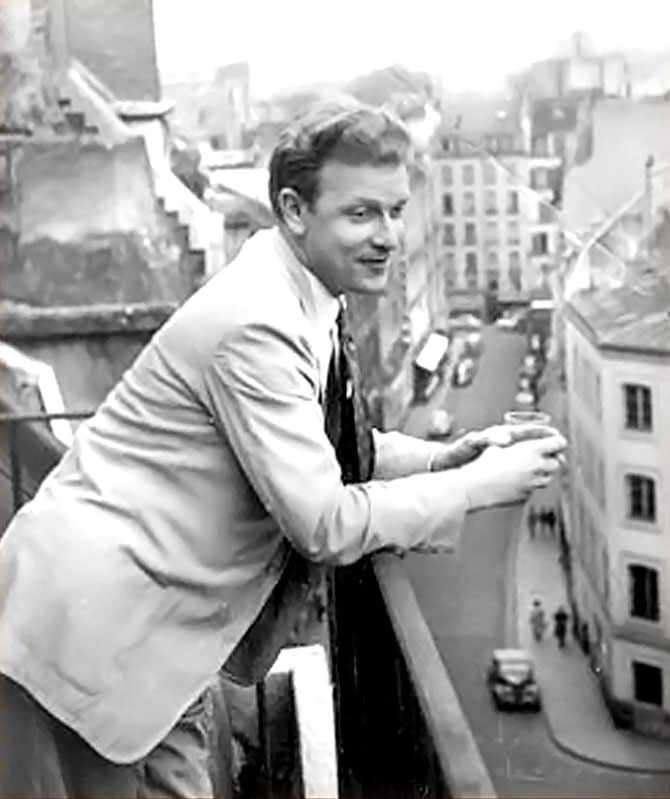
In the five decades of Mobile Bay Magazine, out of all the many writers and reporters who have appeared on these pages, none is remembered more fondly than novelist and poet Eugene Walter, who was also an actor, artist, illustrator, typographer, decorator, gardener and cook. He was a founding member of the Paris Review, he acted in Fellini’s “8 1/2” and over 100 other Italian films, he wrote Time-Life’s “American Cooking: Southern Style,” and all that’s just for starters. Born in 1921, Eugene grew up mostly on Bayou Street in old downtown Mobile, served as a military cryptographer in the Aleutian Islands during World War II, and then after a few years back in Mobile and then New York, he went off to Europe, spending five years in Paris and 25 years in Rome.

Thirty years later, in 1979, it was on these pages that Eugene announced his return with the article “Home at Last!” In it, Eugene says that he had never intended to stay away so long and frequently saw “signposts” in Europe indicating that he must return to Mobile. When translating a paragraph from English to French during a French language exam, a description of children playing hide-and-seek while the street lights were coming on, he says, “With a shock I recognized it as an excerpt from a Mobile story of mine which had appeared in an anthology a year earlier.” Riding a train to the heel of Italy, he thought, “If I don’t have some Bon Secour oysters and a Dew Drop Inn crab omelet sandwich within a year, I’ll die.” Stepping down from the train he sees “a wagonload of okra. Signpost!”
Eugene’s articles mainly appeared during the 1979 – 1982 time period when the magazine was known simply as Mobile, an official publication of the Mobile Chamber of Commerce. Under senior editor Nell Burks, the magazine blossomed remarkably. Joaquin Holloway Jr. wrote a brilliant music column called “Jazz Notes,” Patricia Boyd Wilson, former writer for the Christian Science Monitor, wrote about art, and Elizabeth Gould about architectural history. Nell had been friends with Eugene after the war, and she assembled other writers for the magazine whom they had known in their youth at the Haunted Book Shop, nexus of Mobile bohemians in the 1940s. These included historian Caldwell Delaney, writer Julian Lee Rayford and F. Taylor Peck. Some were also associated with Termite Hall, the fabled literary manse on Dauphin Street.
Nell was enthusiastic, breathless, wide-eyed and welcoming, a born patron, hostess and bringer-together. She encouraged Eugene to write copiously about books, food and lifestyle. Mardi Gras loomed large in his writing. One cooking column of his is entitled “Soups for Grand Balls and Cotillions.” One of his best articles is about John “Gus” Hines, who, starting in 1868, designed parade floats for several Mobile mystic societies, including the legendary Cowbellion de Rakin society in 1871. Hines was “classified primitive or naif as an artist,” Walter says, “but his style and humor were sophisticated,” with witty themes such as “Social Bores and Pests” or “A Burlesque History of England.” The illustrations are original float designs by Hines from Eugene’s personal collection.
A write-up of a social event at the Downtown Athelstan Club notes that “things do go on in Mobile as before,” and he quotes Hammond Gayfer, owner of Gayfer’s department store and for a time Eugene’s guardian when he was a teenager, as saying that “the quickest way to get a piece of information disseminated to all corners of Mobile County was to whisper it in the Athelstan bar.” Odd bits of information and observations from Eugene’s compendious memory flash out as from a chamber of curiosities: “Louis XIV kept English meat cooks in his kitchens and liked to quaff English Cider with rare roast beef.” Or, we learn, in the 1800s Gossip Publishing Company pirated Dickens and Thackeray and printed them here in Mobile before the existence of copyright laws. In an article on the fountains of Mobile, Eugene marvels that some people have lived here all their lives yet never noticed that there are horned satyrs and Greek acanthus leaves on the fountain in Bienville Square.

Among his numerous reviews, Eugene hails books with a Mobile Bay connection, such as Winston Groom’s novel set in Mobile, “As Summers Die,” or “Music for Chameleons” by Truman Capote, the “perfect book for dipping, keeping, redipping.” Eugene calls him Truman Persons, for that was how he knew him in the 1930s, when as children they both wrote for the Mobile Press-Register’s Sunshine Club page. Eugene’s style is inimitable, as when he says of a book about Native American artifacts in Alabama, “Sun Circles and Human Hands,” “No hunter, no fisherman, no amateur botanist, not even the infrequent picknicker nor, again, the gatherer of smilax must be without this book.”
Eugene Walter’s perspective is often peculiar, always Southern. The cumulative effect of these articles from Mobile Bay’s past is a lightness of spirit. Cares fall away, life is a seated dinner, everyone is smiling, and the serene conversation flows on and on.





